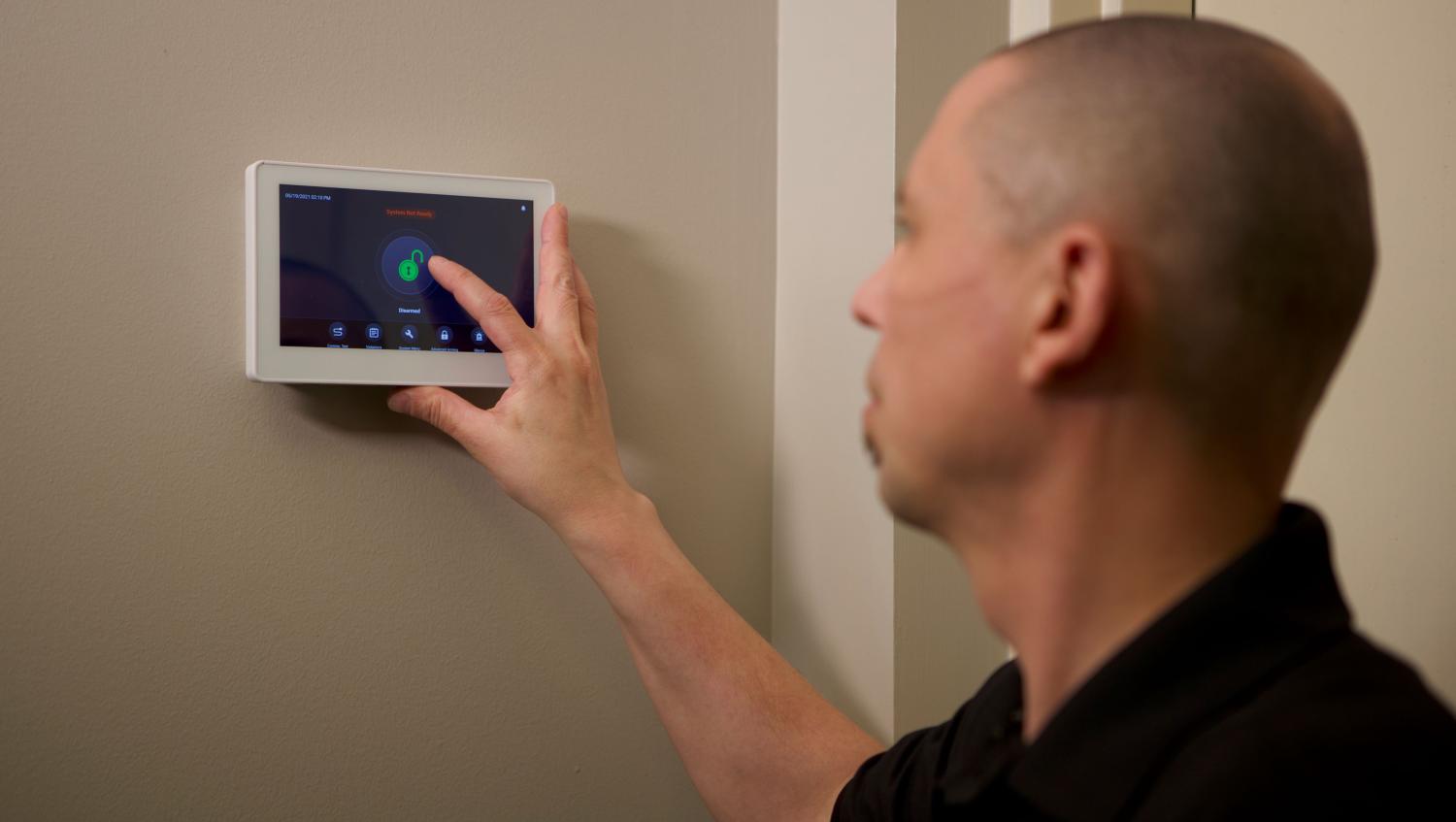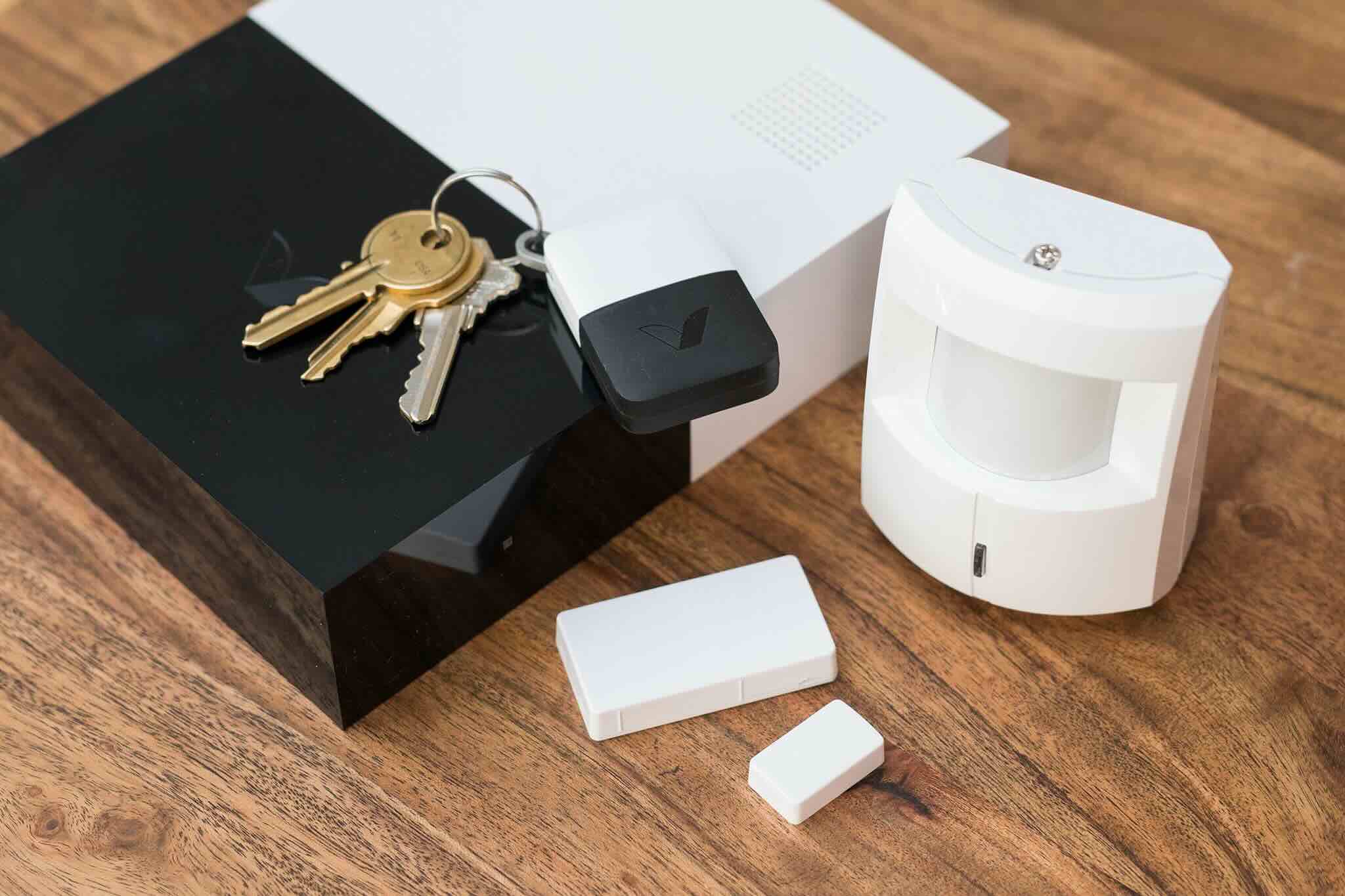Home>Home Security and Surveillance>What Type Of Errors May Intrusion Prevention And Intrusion Detection Devices Suffer From


Home Security and Surveillance
What Type Of Errors May Intrusion Prevention And Intrusion Detection Devices Suffer From
Modified: March 6, 2024
Learn about the common errors that home security and surveillance devices like intrusion prevention and intrusion detection systems may encounter, ensuring optimal protection for your premises.
(Many of the links in this article redirect to a specific reviewed product. Your purchase of these products through affiliate links helps to generate commission for Storables.com, at no extra cost. Learn more)
Introduction
Welcome to the world of home security and surveillance! In today’s fast-paced and interconnected world, ensuring the safety and protection of our homes has become a top priority. With advancements in technology, intrusion prevention and intrusion detection devices have emerged as powerful tools to keep our homes secure. These devices are designed to detect and prevent unauthorized access, providing us with peace of mind and a sense of security.
In this article, we will explore the different types of intrusion prevention and intrusion detection devices available in the market. We will delve into the common errors that these devices may encounter and provide insights into how to overcome them. By understanding these errors, you will be better equipped to make informed decisions when it comes to choosing and deploying the right security solutions for your home.
Before we dive into the errors, let’s have a brief overview of the various types of intrusion prevention and intrusion detection devices.
Key Takeaways:
- Intrusion prevention and detection devices can make mistakes like false alarms and missing real threats. Regular updates and fine-tuning can help minimize errors and keep your home network safe.
- Performance and scalability issues can impact the effectiveness of security devices. Upgrading hardware and optimizing network bandwidth can help ensure your home network stays secure as it grows.
Types of Intrusion Prevention and Intrusion Detection Devices
There are several types of intrusion prevention and intrusion detection devices available in the market today. These devices are designed to detect, monitor, and prevent unauthorized access to our homes. Let’s take a closer look at some of the most common types:
- Video Surveillance Systems: Video surveillance systems use cameras to capture and record footage of activities happening in and around your home. These systems can be connected to a centralized monitoring station or accessed remotely through a mobile app, allowing you to keep an eye on your property from anywhere at any time.
- Alarm Systems: Alarm systems are designed to detect and alert you of any unauthorized entry or suspicious activity. They consist of sensors placed on doors and windows, motion sensors, and a control panel that activates an audible alarm when triggered. Some alarm systems can also be connected to a monitoring service, which will notify the authorities in case of a security breach.
- Access Control Systems: Access control systems are designed to restrict access to your home by utilizing various methods such as keycards, PIN codes, or biometric scans. These systems provide enhanced security by ensuring that only authorized individuals can enter your property.
- Intrusion Prevention Systems (IPS): IPS devices are responsible for detecting and preventing network-based attacks. They analyze network traffic and use various techniques to identify and block suspicious or malicious activity, keeping your home network secure from potential threats.
- Intrusion Detection Systems (IDS): IDS devices monitor network traffic for any signs of unauthorized access or suspicious activity. They analyze network packets, log events, and generate alerts when potential security breaches are detected. IDS devices act as a first line of defense, alerting you to potential threats and weaknesses in your network security.
Each of these devices plays a crucial role in enhancing the security and surveillance of your home. However, as with any technology, they are not exempt from encountering errors and challenges. Let’s explore some of the common errors that you may come across when using intrusion prevention and intrusion detection devices.
Common Errors in Intrusion Prevention Devices
Intrusion prevention devices are designed to detect and prevent network-based attacks, but they are not without their own set of challenges. Here are some of the common errors that you may encounter when using intrusion prevention devices:
- False Positives: One of the most common errors in intrusion prevention devices is the occurrence of false positives. False positives happen when the device incorrectly identifies normal or harmless network traffic as malicious activity. This can lead to unnecessary blocking of legitimate network traffic, causing inconvenience and disruption to normal operations.
- False Negatives: On the other hand, false negatives occur when the intrusion prevention device fails to detect and block actual malicious activity. This can happen due to various reasons, such as outdated threat signatures or advanced evasion techniques employed by attackers. False negatives can potentially leave your network vulnerable to attacks and compromise the security of your home.
- Performance Impact: Intrusion prevention devices operate by analyzing and monitoring network traffic, which can put a strain on network resources. As a result, these devices may introduce latency and slow down network performance. It is essential to ensure that your network infrastructure can handle the additional load imposed by the intrusion prevention device to prevent any negative impact on network performance.
- Configuration and Deployment Issues: Improper configuration and deployment of intrusion prevention devices can also lead to errors and vulnerabilities. Inadequate rule sets, misconfigured policies, or incomplete network coverage can result in ineffective protection against attacks. It is crucial to properly configure and deploy the devices according to your specific network environment and security requirements.
Being aware of these common errors can help you anticipate and address potential issues when using intrusion prevention devices. Now, let’s explore the common errors that may occur with intrusion detection devices.
False Positives
False positives are a common error that can occur with intrusion prevention devices. It happens when the device incorrectly identifies normal or harmless network traffic as malicious activity and takes actions to block it. While false positives may seem like a minor inconvenience, they can have significant implications for your network security and overall operational efficiency.
There are several reasons why false positives may occur:
- Incomplete or Outdated Signatures: Intrusion prevention devices rely on signature databases to identify known threats. If the device’s signature database is incomplete or outdated, it may incorrectly flag legitimate traffic as malicious. It is crucial to keep the device’s signature database up to date to minimize the occurrence of false positives.
- Overly Aggressive Rule Sets: Intrusion prevention devices use rule sets to determine what activities should be considered suspicious or malicious. If the rule sets are overly aggressive, they may generate false positives by flagging normal network behavior as potentially harmful. It is important to fine-tune and optimize the rule sets to strike a balance between security and minimizing false positives.
- Application Incompatibility: Some intrusion prevention devices may have difficulty identifying and correctly handling traffic associated with certain applications or protocols. This can result in false positives when legitimate traffic is misclassified as malicious. It is essential to ensure that your intrusion prevention device is compatible with the applications and protocols used in your network to avoid unnecessary false positives.
- Noise from Network Traffic: Network traffic can be noisy, with numerous data packets flowing through the network at any given time. This can increase the chances of false positives as the intrusion prevention device tries to analyze and interpret the traffic. Implementing traffic normalization and anomaly detection techniques can help reduce false positives by filtering out noise from the network traffic.
Reducing false positives is crucial to maintain the effectiveness of your intrusion prevention devices. Regularly updating signature databases, fine-tuning rule sets, ensuring application compatibility, and implementing noise reduction techniques can significantly minimize false positives and improve the overall accuracy of your intrusion prevention system. By doing so, you can enhance your network security without unnecessary disruptions to legitimate network traffic.
Now that we have explored false positives, let’s move on to the next common error in intrusion prevention devices: false negatives.
False Negatives
False negatives are another common error that can occur with intrusion prevention devices. Unlike false positives, which involve incorrectly flagging normal traffic as malicious, false negatives refer to the failure of the intrusion prevention device to detect and block actual malicious activity. This error can have severe consequences, as it leaves your network vulnerable to attacks and compromises the overall security of your home.
There are several factors that contribute to the occurrence of false negatives:
- Advanced Evasion Techniques: Attackers are constantly evolving their methods to bypass intrusion prevention systems. They may employ advanced evasion techniques that manipulate or disguise network traffic to evade detection. If your intrusion prevention device is not equipped to handle these techniques, it is more likely to miss malicious activity, resulting in false negatives.
- Insufficient Threat Intelligence: Intrusion prevention devices heavily rely on threat intelligence to identify and block known threats. If the device’s threat intelligence is insufficient or not regularly updated, it may fail to recognize new or emerging threats, leading to false negatives. Regularly updating threat intelligence sources and leveraging real-time threat feeds can help mitigate this issue.
- Overwhelmed by Network Traffic: In high-traffic networks, intrusion prevention devices may encounter difficulties in analyzing and processing all the network packets effectively. This can increase the chances of false negatives as the device may struggle to keep up with the volume of traffic, resulting in missed malicious activity. Scaling your intrusion prevention infrastructure and optimizing hardware resources can help address this issue.
- Misconfiguration or Rule Set Errors: Improper configuration or errors in the rule sets used by intrusion prevention devices can also lead to false negatives. If the device is not configured properly or if the rule sets do not cover all necessary attack vectors, it may fail to detect and block malicious activity. Regularly reviewing and updating your rule sets can help minimize the risk of false negatives.
To reduce the occurrence of false negatives, it is crucial to stay up to date with the latest evasion techniques and ensure that your intrusion prevention device is equipped to handle them. Regularly updating threat intelligence sources, optimizing hardware resources, and fine-tuning rule sets based on your network’s specific requirements can significantly improve the device’s effectiveness in catching and blocking malicious activity.
By addressing false negatives, you can strengthen the security of your home network and protect against potential threats more effectively. In the next section, we will explore another common error that can affect intrusion prevention devices: performance impact.
Read more: What Type Of Intrusion Detection May Terminate Processes Or Redirect Traffic Upon Detection
Performance Impact
While intrusion prevention devices play a vital role in ensuring network security, they can also introduce performance impact to your network infrastructure. These devices analyze and monitor network traffic, which can consume valuable network resources and potentially degrade network performance. It is important to understand and address performance impact issues to maintain a secure and efficient network environment.
Here are some factors that can contribute to performance impact:
- Processing Overhead: Intrusion prevention devices require substantial processing power to examine and analyze network packets in real-time. This additional processing overhead can impact the overall performance of your network, particularly in high-traffic environments. It is essential to select intrusion prevention devices that align with your network’s capacity and can handle the processing demands without introducing excessive latency.
- Network Latency: The analysis of network traffic by intrusion prevention devices introduces a certain level of latency. The time it takes for packets to be inspected and classified can impact network responsiveness, especially in real-time applications where low latency is crucial. Prioritizing and optimizing traffic flows and utilizing technologies like deep packet inspection (DPI) can help minimize latency and mitigate the performance impact on critical network operations.
- Hardware Limitations: Some intrusion prevention devices may have hardware limitations in terms of processing power, memory, or network interface capabilities. These limitations can become bottlenecks, affecting the device’s ability to process high volumes of network packets efficiently. Upgrading hardware components or considering more powerful devices can help alleviate performance limitations.
- Network Segmentation: Properly segmenting your network into different zones or VLANs and selectively applying intrusion prevention measures can help minimize performance impact. By focusing intrusion prevention efforts on critical areas or high-risk zones, you can reduce the overall processing load on the devices and alleviate performance issues.
It is important to strike a balance between security and performance when implementing intrusion prevention devices. Consider the specific needs and characteristics of your network to select devices that can deliver the necessary security measures without significantly impacting performance. Regular monitoring and fine-tuning of the devices’ configurations and policies can also help optimize performance and ensure the efficient operation of your network.
By addressing performance impact issues, you can maintain a secure network environment while ensuring that your network continues to run smoothly. In the next section, we will explore another common error that can affect intrusion prevention devices: configuration and deployment issues.
Configuration and Deployment Issues
Configuration and deployment are crucial aspects of effectively utilizing intrusion prevention devices. Improper configuration or deployment can lead to errors, vulnerabilities, and reduced effectiveness of these devices in protecting your home network. It is essential to address configuration and deployment issues to ensure the optimal performance and security of your intrusion prevention system.
Here are some common configuration and deployment issues to be aware of:
- Inadequate Rule Sets: Rule sets define the criteria that intrusion prevention devices use to identify and block malicious activity. If the rule sets are incomplete or not tailored to your network environment, you may encounter false positives and false negatives. It is crucial to regularly review and update your rule sets to include specific threat profiles and align them with your network’s security requirements.
- Misconfigured Policies: Policies govern how the intrusion prevention devices handle network traffic and apply security measures. Misconfiguring policies can lead to ineffective protection or unintended consequences such as blocking legitimate traffic. It is important to carefully define policies based on your network’s needs and regularly review them to ensure they are up to date and aligned with your security goals.
- Incomplete Network Coverage: Intrusion prevention devices should be strategically placed and have appropriate network coverage to effectively monitor and protect your network. If there are gaps or blind spots in your deployment, malicious activity may go undetected. Conducting a thorough assessment of your network and strategically deploying intrusion prevention devices can help achieve comprehensive coverage and maximize their effectiveness.
- Integration Challenges: Intrusion prevention devices need to integrate with your existing network infrastructure seamlessly. Integration challenges, such as compatibility issues with network devices or difficulties in establishing connections, can hinder the proper functioning of these devices. Ensuring compatibility and conducting rigorous testing before deployment can mitigate integration challenges.
It is highly recommended to consult with a security professional or IT specialist during the configuration and deployment of intrusion prevention devices. Their expertise can help you avoid common pitfalls, ensure proper rule set selection, policy configuration, and seamless integration with your network infrastructure.
Regularly reviewing and updating configuration settings, policies, and rule sets, as well as conducting periodic audits and assessments, can help identify any misconfigurations or deployment issues and address them promptly. By properly configuring and deploying intrusion prevention devices, you can significantly enhance the security of your home network and protect against potential threats.
Now that we have explored the common errors in intrusion prevention devices, let’s move on to discussing the common errors that can occur with intrusion detection devices.
Regularly update the signatures and rules on your intrusion prevention and detection devices to prevent false positives and missed attacks.
Common Errors in Intrusion Detection Devices
Intrusion detection devices are essential tools for monitoring and detecting potential security breaches in your home network. While they are designed to enhance network security, they are not immune to errors and challenges. Understanding common errors in intrusion detection devices can help you better address and mitigate potential vulnerabilities. Let’s explore some of these common errors.
- False Positives: False positives occur when intrusion detection devices incorrectly identify legitimate network activity as malicious. This can lead to unnecessary alerts and potential disruptions in normal network operations. False positives can arise due to factors like misconfiguration, outdated detection rules, or insufficient context analysis. Regularly updating detection rules and implementing proper customization and fine-tuning can help minimize false positives.
- False Negatives: False negatives refer to the failure of intrusion detection devices to detect actual security breaches. This can happen due to various reasons, such as sophisticated attack techniques, zero-day vulnerabilities, or misconfigurations in the device itself. False negatives can result in undetected malware infections or unauthorized access, putting your home network at risk. Regularly updating detection signatures, leveraging behavior-based detection mechanisms, and conducting regular audits can help reduce false negatives.
- Scalability Issues: Intrusion detection devices may face scalability challenges in high-traffic networks or environments with a large number of devices. As the volume of network traffic increases, the devices may struggle to handle the increased load, leading to delays in alert generation or missed incidents. Scaling up the hardware resources and implementing distributed detection systems can help address scalability issues.
- Rule Management Challenges: Intrusion detection devices rely on rules to detect and classify network activity. Managing and maintaining a large number of rules can become complex and prone to errors. It can result in inefficient detection, false negatives, or false positives. Implementing centralized rule management, automation, and periodic review of rules can help streamline the rule management process and improve overall detection effectiveness.
Addressing these common errors requires a proactive approach that includes regular updates, fine-tuning, and ongoing monitoring of intrusion detection devices. Collaborating with cybersecurity professionals and staying up to date with the latest threat intelligence can also help in effectively managing and mitigating these errors.
By understanding the common errors in intrusion detection devices, you can take the necessary steps to optimize their performance, reduce false positives and negatives, and enhance the security of your home network. In the next section, we will conclude our discussion with a summary of the key points covered.
False Positives
False positives are a common error that can occur in intrusion detection systems. False positives are when the system incorrectly identifies legitimate activities as malicious. This can lead to unnecessary alarms, alert fatigue, and wasted resources investigating non-existent threats. Understanding the causes of false positives and implementing strategies to minimize them is crucial for an efficient and accurate intrusion detection system.
There are several factors that can contribute to false positives:
- Misconfigured Detection Rules: Misconfigured detection rules may trigger false positives by incorrectly flagging normal network behavior as suspicious or malicious. It is important to ensure that detection rules are properly calibrated and customized to match the specific security requirements of your home network. Regularly updating and fine-tuning the rules can minimize false positives.
- Outdated Signature Databases: Intrusion detection systems use signature databases to identify known patterns of malicious activity. If the signature database is not regularly updated, it may flag legitimate activities as threats. Keeping the signature database current and incorporating the latest threat intelligence can reduce false positives by accurately identifying real threats.
- Overly Sensitive Thresholds: Setting detection thresholds too high can result in an increased number of false positives. When thresholds are set too sensitively, even minor deviations from normal behavior can trigger alarms. Adjusting detection thresholds to strike a balance between sensitivity and specificity can help reduce false positives while maintaining a high level of security.
- Insufficient Context Analysis: False positives may occur when the system lacks contextual information to accurately assess the nature of network activities. Without considering the broader context of network behavior, benign activities can be misinterpreted as malicious. Incorporating contextual analysis, such as user behavior profiling, can aid in distinguishing between normal and abnormal activities, reducing false positives.
To minimize false positives, proactive measures can be taken:
- Regularly review and update detection rules to ensure they remain effective and properly tuned to your network’s characteristics.
- Maintain an up-to-date signature database to enhance the system’s ability to identify known threats accurately.
- Regularly assess and adjust detection thresholds to strike a balance between accuracy and false positive reduction.
- Incorporate contextual analysis to provide a deeper understanding of network behavior and accurately distinguish between normal and abnormal activities.
By addressing the issues that contribute to false positives, you can improve the accuracy and efficiency of your intrusion detection system, allowing it to focus on legitimate threats rather than generating false alarms. This will help ensure the security and integrity of your home network.
Now that we have explored false positives, let’s move on to discussing false negatives, another common error in intrusion detection systems.
False Negatives
False negatives are a common error that can occur in intrusion detection systems, and they pose a significant risk to the security of your home network. Unlike false positives, false negatives occur when the system fails to detect and alert on actual malicious activities, allowing potential threats to go undetected.
There are several factors that can contribute to false negatives:
- New or Unknown Threats: Intrusion detection systems rely on signature-based detection to identify known threats. However, they may fail to detect emerging or previously unknown threats that do not match any existing signatures. To mitigate false negatives, it is important to complement signature-based detection with behavior-based or anomaly detection techniques that can identify suspicious activities based on abnormal behavior patterns.
- Insufficient Data Capture and Monitoring: False negatives can occur if the intrusion detection system does not capture or analyze all relevant network traffic and logs. Incomplete data collection and limited monitoring visibility may lead to missed indicators of compromise and malicious activity. Ensuring comprehensive coverage and effective monitoring of network traffic can help reduce the risk of false negatives.
- Insufficient Rule Set Coverage: False negatives can also result from an incomplete or inadequate set of detection rules within the system. If the rule set does not cover all relevant attack vectors or fails to account for the specific security requirements of your home network, it may miss certain types of malicious activities. Regularly updating and expanding the detection rule set based on evolving threats and your network’s characteristics can help minimize false negatives.
- Excessive Noise from Legitimate Activities: In a network with high volumes of legitimate traffic, it can be challenging for intrusion detection systems to differentiate between normal and malicious activities. This can increase the risk of false negatives, as the system may overlook suspicious behavior amidst the noise of legitimate traffic. To address this, implementing traffic normalization techniques and leveraging advanced algorithms that filter out noise can help improve the accuracy of detection and reduce false negatives.
To mitigate false negatives, it is important to employ a multi-layered approach to intrusion detection:
- Combine signature-based detection with behavior-based or anomaly detection techniques to identify both known and unknown threats.
- Ensure comprehensive and effective data capture and monitoring to capture all relevant network traffic and logs.
- Regularly update and expand the detection rule set to cover new and evolving threats.
- Implement traffic normalization techniques and advanced filtering algorithms to reduce noise and improve the accuracy of detection.
By addressing these factors and implementing a robust and comprehensive intrusion detection system, you can minimize the risk of false negatives and significantly enhance the security of your home network.
Now that we have explored false negatives, let’s move on to the next section, which covers scalability issues in intrusion detection systems.
Scalability Issues
Scalability is a critical aspect of intrusion detection systems, as they need to accommodate the ever-growing volume of network traffic in today’s connected world. Scalability issues can arise when intrusion detection systems struggle to handle the increasing amount of data and demands placed on them. It is crucial to address scalability challenges to ensure the effectiveness and efficiency of your intrusion detection system.
Here are common scalability issues that can occur:
- Processing Power and Speed: As the volume of network traffic increases, intrusion detection systems can be overwhelmed by the processing demands. Large networks or networks with high-speed data transfers may experience delays in processing and analyzing network packets, resulting in potential performance bottlenecks and missed detection opportunities. Scaling up the system’s processing power, including CPU and memory resources, can help alleviate these scalability challenges.
- Storage Capacity: Intrusion detection systems generate and collect a vast amount of data, including network traffic logs, events, and alerts. As the system scales, the storage capacity required to retain this data increases. Inadequate storage capacity can lead to the loss of critical information, making it challenging to conduct comprehensive forensic analysis or review historical data. Ensuring sufficient storage capacity and implementing appropriate data retention policies is crucial to address scalability challenges related to storage.
- Network Bandwidth: The network bandwidth available to your intrusion detection system can become a limiting factor when scaling. High-speed networks with large amounts of traffic may overwhelm the available network bandwidth, causing data loss, delays in processing, or missed detection opportunities. Proper network architecture and scaling strategies, such as implementing load balancing and using dedicated network segments, can help alleviate these bandwidth-related scalability challenges.
- Management Complexity: As intrusion detection systems scale across multiple locations or network segments, managing and coordinating them can become complex. Ensuring centralized management and monitoring capabilities, as well as streamlining policy and configuration management, can help simplify operations and effectively address scalability challenges associated with system management.
To address scalability challenges in intrusion detection systems, consider the following strategies:
- Scale up the system’s processing power, including CPU and memory resources, to handle increasing volumes of network traffic.
- Ensure sufficient storage capacity and implement appropriate data retention policies to retain and analyze critical data.
- Optimize network bandwidth by implementing load balancing, dedicated network segments, or traffic prioritization to accommodate high-speed networks.
- Implement centralized management and monitoring capabilities to simplify system management and coordination in a scalable environment.
By proactively addressing scalability challenges, you can ensure that your intrusion detection system can effectively handle the growing demands of your home network, provide accurate and timely detection, and maintain the security of your network.
Next, let’s explore the challenges associated with rule management in intrusion detection systems.
Rule Management Challenges
Rule management is a critical aspect of maintaining an effective intrusion detection system (IDS). As networks and security requirements evolve, managing detection rules becomes crucial to identifying and responding to potential threats. However, rule management can present several challenges that need to be addressed for optimal IDS performance.
Here are some common challenges related to rule management:
- Rule Set Complexity: Over time, the rule set in an IDS can become complex, especially in large-scale networks. Managing a comprehensive and extensive rule set can be challenging, and it can be difficult to evaluate the impact of each rule and ensure they work together effectively. Regularly reviewing and streamlining the rule set can help simplify management and improve detection efficiency.
- Rapidly Evolving Threat Landscape: The threat landscape is constantly evolving, with new attack techniques and vulnerabilities emerging regularly. Updating the rule set to address emerging threats is crucial but can be time-consuming. Automating rule updates using threat intelligence feeds and collaborating with security vendors can help ensure the rule set remains up to date for effective threat detection.
- Rule Conflicts: In complex rule sets, conflicts between individual rules may arise, leading to inconsistent or unpredictable detection behavior. Rule conflicts can result in missed detections or false positives. Regular evaluation, testing, and validating the rule set can help identify and resolve conflicts, enhancing the overall effectiveness of the IDS.
- Lack of Contextual Awareness: Understanding the context in which rules are triggered is essential for accurate detection. Without contextual awareness, IDS devices may generate false positives or may not detect subtle variations in attack patterns. Incorporating contextual information, such as network topology, user behavior, and business-specific policies, can help improve the accuracy of rule triggers.
To effectively manage detection rules, consider the following strategies:
- Regularly review and streamline the rule set to ensure it remains concise, relevant, and aligned with your network’s security requirements.
- Stay up to date with the latest threat intelligence and automate rule updates using threat feeds and collaboration with security vendors.
- Evaluate and test the rule set regularly to identify and resolve conflicts, improving the consistency and accuracy of rule triggers.
- Incorporate contextual information, such as network topology and user behavior, to enhance the contextual awareness of rule triggers.
By effectively managing detection rules, you can improve the efficiency and accuracy of your IDS. Regular evaluation, updating, and optimization of the rule set will ensure that your IDS remains current and effective in detecting and mitigating potential threats to your home network.
Now that we have explored the common errors and challenges associated with intrusion detection systems, let’s conclude our discussion with a summary of the key points covered.
Conclusion
Intrusion prevention and intrusion detection devices are crucial components of a comprehensive home security and surveillance system. They play a vital role in detecting and preventing unauthorized access, ensuring the safety and protection of your home network. However, these devices are not without their own set of challenges and errors.
In this article, we have explored the common errors that can occur in intrusion prevention and intrusion detection devices. False positives and false negatives are common errors that can impact the accuracy and efficiency of these systems. It is important to fine-tune and update rule sets, regularly update signature databases, and incorporate behavior-based or anomaly detection techniques to mitigate these errors.
Performance impact and scalability issues are also challenges that need to be addressed. Scaling up hardware resources, optimizing network bandwidth, and implementing centralized management can help alleviate performance issues and ensure scalability as your network grows.
Rule management challenges, such as complex rule sets and conflicts, require regular review and updating. Incorporating contextual awareness and staying updated with the rapidly evolving threat landscape are vital to ensuring the effectiveness of intrusion detection systems.
By being aware of these common errors and challenges and taking proactive steps to address them, you can enhance the security and surveillance capabilities of your home network. Regular monitoring, updating, and fine-tuning of intrusion prevention and intrusion detection devices will help ensure their effectiveness in protecting your home against potential threats.
Remember, maintaining a secure home network requires a multi-layered approach that combines technology, best practices, and continuous vigilance. By staying informed and proactive, you can create a safe and secure environment for yourself and your loved ones.
Frequently Asked Questions about What Type Of Errors May Intrusion Prevention And Intrusion Detection Devices Suffer From
Was this page helpful?
At Storables.com, we guarantee accurate and reliable information. Our content, validated by Expert Board Contributors, is crafted following stringent Editorial Policies. We're committed to providing you with well-researched, expert-backed insights for all your informational needs.













